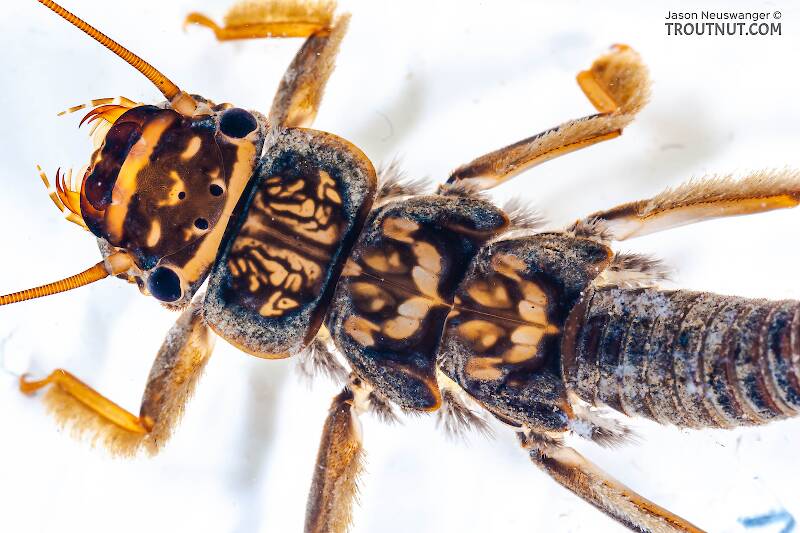
Blue-winged Olives
Baetis
Tiny Baetis mayflies are perhaps the most commonly encountered and imitated by anglers on all American trout streams due to their great abundance, widespread distribution, and trout-friendly emergence habits.
Featured on the forum

This one seems to lead to Couplet 35 of the Key to Genera of Perlodidae Nymphs and the genus Isoperla, but I'm skeptical that's correct based on the general look. I need to get it under the microscope to review several choices in the key, and it'll probably end up a different Perlodidae.

Troutnut is a project started in 2003 by salmonid ecologist Jason "Troutnut" Neuswanger to help anglers and
fly tyers unabashedly embrace the entomological side of the sport. Learn more about Troutnut or
support the project for an enhanced experience here.
GONZO on Oct 10, 2006October 10th, 2006, 2:08 pm EDT
I've been staring at this one for quite some time. My first impression was lycorias (Boreal Stone, Giant Brown Stonefly). I'm pretty familiar with this species, but I don't know of a good key to Acroneuria at the species level.
The lack of a row of spinules along the occiput of the head and presence of postocular and pronotal fringes all say Acroneuria for sure.
The lack of a row of spinules along the occiput of the head and presence of postocular and pronotal fringes all say Acroneuria for sure.
GONZO on Oct 28, 2008October 28th, 2008, 6:34 am EDT
Jason, I now think that this is probably abnormis rather than lycorias.


